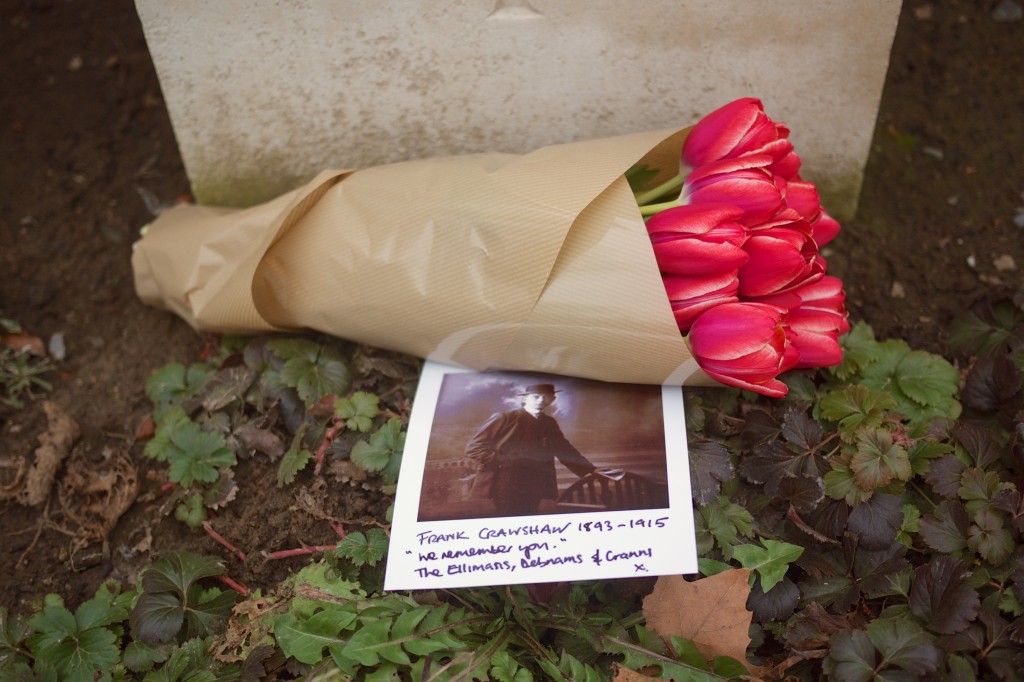11th February 2015
I wrote today’s post from a hotel room in Ypres. I’ve got a nice little office set up in my hermetically sealed corporate bolt hole (how I like my hotels. i.e. no baths in the middle of the room for me, thank you very much), free wifi and a Lemsip in a branded mug (battling severe man-flu). The iPad has just thrown up the first song in my Spotify collection: Act of Remembrance by the Proclaimers. I promise you that’s true.
My act of remembrance has been the last six months writing over 180 posts for this blog. I’ve written about chickens, cross-dressing aristocrats, psycho engineers, trench warfare, VD, buses, flowers and beer. Every day, mostly nights, I’ve sat writing a post about a time I didn’t know much about, about a man I never knew, about a place I know even less about. I’ve stuck to my initial rules: No made up stories, facts only, all researched and written the same day. Admittedly some posts have taken me over into the early hours of the next day. Some I forgot to post. One I lied about forgetting to post. But I’ve stuck to my original plan and for that I’m proud. Am I a better writer? Certainly not – I haven’t had time to hone any of these posts to a level I’m happy with, but I’m a better researcher than I was, for sure.

I’m not sure anyone cares, but coming here is something of a milestone for me. I do not travel well. Think of a cross between B.A. Baracus and a barrel of English bitter. I get a nosebleed crossing into Surrey, let alone leaving the country. I do hope that this is the start of an annual pilgrimage to Ypres for my family. And, although Frank actually never came here himself, it’s such a great centre from which to explore the nearby battlefields. The Belgians are extremely hospitable, brew incredible beers and their food is excellent. What’s not to like? It’s also less than an hour from Eurotunnel. A no-brainer for stay-at-homes like me.
I’d like to thank my ever-patient wife, Jessica. She’s my absolute rock and I love her. And Kitty, my daughter, for proofing all my posts (sorry about all those tyopoze – she’s seven months old). I won’t be posting as much on this blog from today but thank you for reading. I hope you had as much fun reading it as I did writing it.
